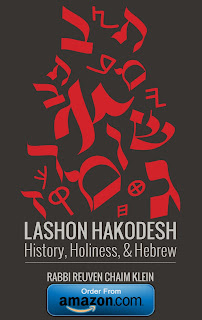I have updated one of my favorite Qoton Qlassic's about the happiness of Yom Kippur and Succos and the correlation and differences between the two holidays. There are changes throughout the essay, but the main new addition is the following paragraph:
Perhaps one can explain the happiness on Succos is a result of the sealing of one’s fate on Yom Kippur. A popular Hebrew dictum states, “There is no happiness like the answering of a doubt”. Indeed, the feeling of doubt is potentially the most negative and destructive emotion. Uncertainty can cause one to resort to drastic measures as a means of achieving closure. In fact, a famous Hassidic lesson related in the name of the Ba’al Shem Tov, Rabbi Yisroel ben Eliezer (1698-1760), explains that the numerical value of the Hebrew word for doubt (safek/safeq) is equivalent to that of the word “Amalek” because just as Amalek, the grandson of Esau can attack a person and adversely affect one’s sanity through his venom, so does a doubt hit at the core of a person’s functionality to destroy him from the inside. Accordingly, it serves to reason that there can be no greater feeling than the feeling of relief in answering a doubt. The Talmud states that on Rosh HaShannah those who are completely righteous are written and sealed with a favorable judgment, and the those who are completely wicked, the opposite, but everyone in between is in a state of limbo until Yom Kippur at which time they are judged and, according to their actions, are written and sealed. This state of limbo stands as an indecision of one’s fate is surely the worst situation in which one can be, therefore one can understand that on Yom Kippur when sins are forgiven, one can revel at the happiness of knowing that his destiny has been finalized. This serves as the underlying reason for the happiness of Yom Kippur and the subsequent days including Succos. To answer the question of the Ritva, one can explain that the happiness of Succos and Yom Kippur are indeed one and the same, and indeed they are the same as Tu B’Av. The joy of Tu B’Av originated in the fortieth year of the Jews’ travels in the Sinai Desert when until then every year on Tisha B’Av, all the Jews slept in a grave and a segment of those who sinned by accepting the Ten Spies’ false slanderous testimony about the Land of Israel died. However, in the fortieth year, every person woke up on Tisha B’Av, no one died that year. The Jews assumed that they must have miscalculated the date, and performed the same rite the next day. Yet, even the next night, no one died. They again assumed that they erred in calculating the date, and this continued until they saw the full moon on the fifteenth of the month at which point they know with certainty that Tisha B’Av had passed a no one died. This was the cause for celebration on Tu B’Av, the fifteen of Av. Indeed this explanation also conveys the idea of being happy at resolving an uncertainty for each night until Tu B’Av every man who slept in a grave was uncertain whether the next day he would wake up, but from Tu B’Av and onwards, he knew that he would. Therefore, the root of the happiness on Yom Kippur and Succos is the same as the basis for the happiness of Tu B’Av.


 orcid.org/0000-0001-9317-3282
orcid.org/0000-0001-9317-3282
